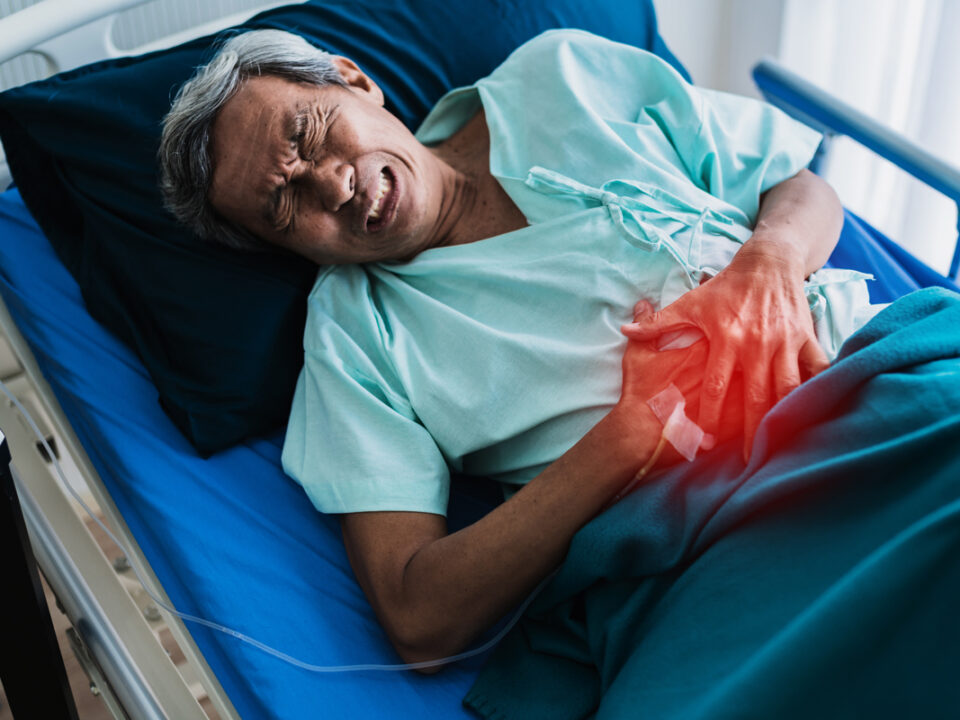
Role of Hyperbaric Oxygen Therapy in Renal Regeneration in End Stage Renal Disease and Hemodialysis
23/03/2024
Role of Hyperbaric Oxygen Therapy in Depression
23/03/2024The use of Hyperbaric Oxygen Therapy (HBOT) to treat concussions and traumatic brain injuries in patients aims to relieve symptoms and accelerate recovery by promoting damaged tissue repair and angiogenesis, or blood vessel growth. This is what HBOT India has to say.
Concussion
Concussions are a type of traumatic brain injury (TBIs). They are often caused by some type of external force, including wounds that penetrate the skull and closed-head injuries. Concussions can have varying degrees of severity, but all are considered serious injuries that should be evaluated by a medical professional. Professional and adolescent athletes, particularly those involved in contact sports, tend to be more at risk. However, anyone could suffer a concussion – sports injuries, accidents, and falls all could result in brain trauma. Symptoms are emotional, physical and cognitive and may include headache, dizziness, memory loss and personality changes. They can be short-lived or last for months or even years without resolving.
Concussions are “temporary disturbances of brain function” caused by blunt force trauma. Usually, concussions are traumatic brain injuries. Traumatic brain injuries can be mild and go away quickly, or they can cause you to lose consciousness for a long time. It is often said that concussions are mild traumatic brain injuries (mTBI) because their symptoms typically resolve independently.
Causes of Concussion
A concussion can happen when the head gets hurt directly or indirectly. A direct, hard blow to the head is believed to be the leading cause of a concussion. A concussion can also be caused by injuries that are not directly to the head but happen elsewhere in the body. This is called an acute acceleration-deceleration injury to the brain.
People often get concussions in car accidents, when they are hit by an object, when they are attacked, or when they play sports for fun. Out of the total, a small percentage of concussion cases belong to sports injuries. Women who play the same sport as men get concussions about twice as often as men who play the same sport.
Signs and symptoms of Concussion
Symptoms associated with a concussion can be categorized into four categories. Some of the most common symptoms seen with concussion within each domain include:
- Emotional function, including irritability and mood alterations
- Cognitive disabilities include confusion, memory loss, confusion in mind, and difficulty paying attention
- Physical symptoms include headache, dizziness, poor balance, and visual changes
- Sleep problems including drowsiness, less sleep than usual, more sleep than expected, and having trouble falling asleep
Loss of consciousness is a key sign of a severe head injury. Also, symptoms of a concussion don’t always show up right away after an injury. Days or hours later, the appearance of symptoms after the initial injury is also a sign of a concussion. Previous concussions in a patient’s history are significant. A previous concussion’s intensity, time-frame, and the total amount of symptoms can indicate recovery time. Earlier complaints of mood swings, intellectual disabilities, sleep problems, and migraine headaches also affect the management of concussions.
Underlying Mechanisms of Concussion
The underlying mechanism of a concussion is a complicated process. The immediate symptoms of a concussion are caused primarily by a functional disability rather than structural damage to the brain. Neurochemical and metabolically events change how the brain and nerves work after a head injury. A head injury, including acceleration, deceleration, or head motion, can cause acute axonal damage by messing up the structural arrangement of filamentous. Depolarization of ion channels causes electrolytes to leak out. This causes neurotransmitters to leak out, which in turn causes neurological dysfunction. Reduced blood flow to the brain disturbs the activity of mitochondria due to altered glucose metabolism.
Common Treatments for Concussion
After a concussion, primary care assessment by a responsible person informed of danger signs is generally appropriate. Patients who show signs or symptoms of a more severe head injury may require hospitalization longer. Concussed patients should be removed from situations that could result in another hit to the head. Medical intervention for a concussion involves limiting physical and mental exercise and slowly returning to the same activity level as before. In the first one to two days, rest is recommended for patients. But no one knows the best length of time for the first rest period. The patient should slowly get back to normal activities while being carefully watched for symptoms to return or worsen. If signs come back, you should slow down until they get better. Athletes with concussions shouldn’t be able to play again until a doctor gives them the all-clear.
Clinical profiles of concussions are performed based on the results; early interventions are helpful. Some examples of these treatments are vision training for people with oculomotor dysfunction or cognitive-behavioral therapy for people with mood problems. Analgesics can be used optionally as over-the-counter headache pain relievers.
However, it is not recommended for the patient to take other medications that may alter their cognitive performance, sleep patterns, or mood, as these drugs may hide the actual severity of the concussion. After a concussion, patient should not take headache preventives for the first time, but if patient was taking them before the injury, you could start retaking them.
Role of Hyperbaric Oxygen in Concussion Recovery
How HBOT Works
The brain gets 15% of the blood flow from the heart, uses 20% of the body’s oxygen, and uses 25% of the body’s glucose. Still, this energy is only enough to keep about 5–10% of the neurons working at any given time. This means that under normal circumstances, the brain constantly uses nearly all of the oxygen and energy supplied to it. After a brain injury, the healing process takes a lot of extra energy. In this case, hyperbaric oxygen therapy can assist, as the increased oxygen level in the blood and body tissues during treatment can supply the energy needed for brain repair.
Several studies have shown that HBOT can heal damaged brain tissue. The increased oxygen rates have a significant impact on the metabolic processes that take place in the brain, which are primarily controlled by glacial cells. Better energy management leads to extensive repair, perhaps triggering neural stem cell differentiation and increasing angiogenesis and neurolinguistics. The idea that HBOT can aid brain healing is logical and has been supported by research.
Benefits of HBOT in Concussion Recovery
The primary mechanism of traumatic brain injury, or concussion, is hitting the brain against the skull, and thus the brain cells get damaged. Injury to brain cells also causes long-term biochemical effects. That is why early treatment of concussions is necessary, and hyperbaric oxygen therapy has been reported to benefit the treatment of concussions.
Boost Blood Supply
Blood vessels that help transport blood throughout the body are so tiny that a bit of obstruction or minor injury can block the blood vessels. The patient may have acute pain and lost senses. HBOT reduces pain by increasing blood supply through the affected artery. Oxygen under high pressure helps in removing lock-age. After removing the blockage, the vessels widen, and the wide vessels transport more blood. This improves brain functioning and reduces pain.
Repair of Injured Tissues
Brain and its related pasts are made up of tissues. These tissues are delicate and easily get damaged due to injury. Damaged tissue can also cause brain dysfunction. To avoid more loss, it is necessary to repair damaged tissues. HBOT plays a significant role in fixing injured tissues. It helps to improve hypoxic tissues by supplying oxygen.
Accelerate Recovery
Acute mental stress due to injury hinders blood supply and weakens immunity. Brain injuries may cause permanent brain damage due to a reduced oxygen supply. Hyperbaric oxygen therapy provides excess oxygen that not only fills an oxygen deficiency but also boosts recovery.
Pocket Friendly
Hyperbaric oxygen therapy is economical; even middle-class persons can benefit from HBOT and can save their lives. Many brain injuries that need expensive treatments can also be cured by HBOT.
Evidence of Hyperbaric Oxygen in Concussion Recovery
In the review article “Hyperbaric oxygen therapy for traumatic brain injury: bench-to-bedside” by Qin in 2016, several investigations were reported. All studies showed successful recovery with HBOT in patients with acute TBI, chronic TBI, post-concussion symptoms, a head injury coma, and a brain lesion. HBOT was administered at various pressures and for different duration, depending on the TBI. The results showed improved glucose metabolism and cerebrovascular fluid, reduced post-concussion symptoms, reduced mortality, and fewer parapsychologist disorders.
Conclusion
Direct or indirect concussions can result from transient changes in brain activity. Treatment for concussions is influenced by sleep issues, headaches, intellectual disabilities, and migraines. Recovery time may be predicted by the severity, length, and quantity of concussion symptoms. After suffering a concussion, a patient should stay out of situations that could result in more head trauma. Hyperbaric oxygen therapy may promote brain regeneration by increasing oxygen levels in the blood and tissues. Research indicates that HBOT can repair damaged brain tissue. By eliminating blockages, HBOT oxygenates veins and arteries. Expanded veins improve brain function by supplying the brain and its surrounding areas with more blood. Tissue repair is aided by hyperbaric oxygen. Tissue healing is accelerated by increasing the body’s oxygen delivery. The therapy raises blood oxygen supply multiple times.




